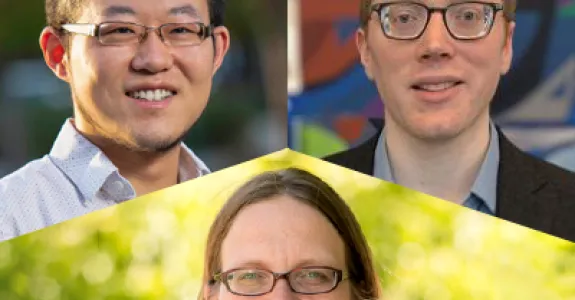
Dr. Andrew J. Mannix is an assistant professor of Materials Science and Engineering at Stanford University. He completed his B.S. in Materials Science and Engineering at the University of Illinois at Urbana-Champaign, and his Ph.D. in Materials Science and Engineering at Northwestern University as an NSF GRFP Fellow, where he worked on the growth and atomic-scale characterization of new 2D materials. Before moving to Stanford, Andy was a Kadanoff-Rice Postdoctoral Fellow in the James Franck Institute at the University of Chicago, where he developed new methods of atomically-thin nanomaterials growth, processing, and automated heterostructure assembly. His lab at Stanford focuses on the growth, assembly and atomic-scale characterization of 2D materials for new electronic and quantum information science applications.
Atomically thin 2D materials incorporated into van der Waals heterostructures are a promising platform to deterministically engineer quantum materials with atomically resolved thickness and abrupt interfaces across macroscopic length scales while retaining excellent material properties. Because 2D materials exhibit a wide range of electronic characteristics with properties that often rival conventional electronic materials — e.g., metals, semiconductors, insulators, and superconductors — it is possible to combine them in virtually infinite variety to achieve diverse heterostructures. Furthermore, the van der Waals interface enables interlayer twist engineering to modify the interlayer symmetry, periodic potential (moiré superlattice), and hybridization, which has resulted in novel quantum states of matter. Many of these heterostructures, especially those involving specific interlayer twist angles, would be otherwise infeasible through direct growth.
The Mannix Group is developing a unique set of in-house capabilities to systematically elucidate the fundamental structure-property relationships underpinning the growth of 2D materials and their inclusion into van der Waals heterostructures. Greater understanding will allow them to provide a platform for engineering the properties of matter at the atomic scale and offer guidance for emerging applications in novel electronics and in quantum information science.
To accomplish this, they employ: precise growth techniques such as chemical vapor deposition and molecular beam epitaxy; automated van der Waals assembly; and atomically-resolved microscopy including cryo-STM/AFM.

